

Nagoya Meshi: All about seasoning and style
|
Gourmets who love Japanese food, have you heard of Nagoya Meshi?
The term “Nagoya Meshi” is actually rather recent. The chairman of a Nagoya-based restaurant operator, Kenichi Inamoto, opened his first store in Tokyo in 2001. The media, eager to describe the delicious regional fare that Inamoto was serving at his restaurant under one umbrella term, suggested “Nago-meshi”, after the abbreviation “Ita-meshi”, for Italian food. Inamoto however, tweaked the term slightly, thus giving birth to the term that is widely used today, “Nagoya Meshi!” “Nagoya Meshi” is intended as an umbrella term for the delicious dishes that can be found not only in Nagoya City itself, but also all of Aichi Prefecture. As such, it is difficult to go through every single delicacy that is on that list. However, here are some of the more well-known dishes that are enjoyed daily by the residents of Aichi! Miso is a fermented paste that is used to season many Japanese dishes. Every region has its own unique spin on miso, and may use different regional ingredients. Aichi is most well-known for red miso. Compared to white miso (variations of which can be made from rice or barley, or a combination of both), red miso is made using only soybeans. It is fermented longer and as such, produces a dark-reddish colour and a more intense flavour than white miso. Hatcho miso is one type of red miso in particular that is a household name not only in Aichi, but all across Japan! Many joke that “the people of Aichi will put miso on anything.” Indeed, miso lends its flavour not only to savoury dishes, but even dishes like cakes in the prefecture! One of the prefecture’s most venerated soul foods is miso-katsu (味噌カツ). Katsu, or fried pork cutlet, is usually served with a sauce that is made primarily with a mixture of soy sauce, Worcestershire sauce, and ketchup (amongst other ingredients). Miso-katsu is instead paired with a savoury sauce made of hatcho miso! Red miso is also the star ingredient in another of Aichi’s soul foods: miso-nikomi udon (味噌煮込みうどん). Deliciously firm udon noodles are served in a special soup that is made from red miso and dashi stock. Miso-nikomi udon is also special in that it is usually served in a donabe, or an earthenware pot, so patrons can see their soup still bubbling and boiling when it arrives at their table! Warm and flavourful, this is the perfect dish for the cold winter months in Aichi. Of course, luxury ingredients like eel are also highlighted in Nagoya Meshi. Eels have long been raised in the warm waters of Mikawa Bay, located south of Nagoya. The port-town of Isshiki began farming eels and now, the high-quality eels bred in this area account for 20% of all eels produced and eaten in Japan. With the region’s close and historic relationship with eels, it may come as no surprise that the famous eel dish known as hitsumabushi (ひつまぶし) has its origins in Aichi. |
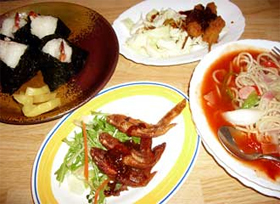 © Web Japan 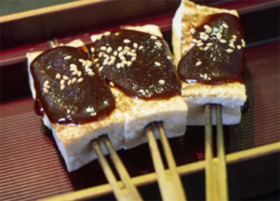 © photoAC 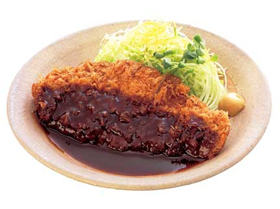 © Nagoya Convention & Visitors Bureau 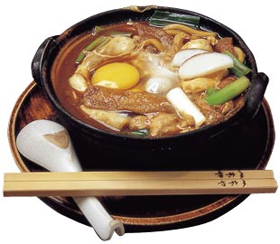 © Sugawara Chiyoshi and Kono Toshihiko |
|
In the 1870s, a Nagoya restaurant began serving their broiled eel in small pieces atop rice in a wooden container meant for cooked rice. Hitsumabushi is also eaten in a particular way. First, a rice paddle is used to divide the rice into four equal portions. One portion is dished out from the serving container into a separate bowl and eaten as is; next, the second portion is dish out and eaten with relishes (such as wasabi, seaweed, scallions, and so on); following that, the third portion is eaten ochazuke-style, with either tea or broth; the final portion is eaten the way the diner prefers the most.
Besides regional seasonings and ingredients, Nagoya Meshi also encompasses a particular breakfast culture. Known simply as “morning”, this refers to a free breakfast consisting mainly of bread, boiled egg, and salad with any purchase of a morning drink at a café. Though what is served can vary according to the café, one staple of cafés in Aichi is ogura toast (小倉トースト), which is a thick slice of toast served with butter and sweet red bean paste. Some cafés may even choose to serve their toast with pureed red bean paste, known as anko, instead. Either way, this dish is sure to sweeten the mornings of many in Aichi! Though it is widely recognised as Nagoya-style breakfast, it is thought to have actually originated in Ichinomiya, a smaller city just north of Nagoya that is known for its textiles industry. In the 1960s, cafés in the city began serving toast, eggs, and peanuts to regular customers who worked in the industry. This caught on prefecture-wide, so much so that many travelers through Aichi actually look forward to waking up in the prefecture! Of course, there are many other dishes that are listed as Nagoya Meshi. These include other miso-based dishes like miso oden, and dishes that use special regional meat like Nagoya Cochin Chicken and shrimp! These delicious dishes play a large part in attracting visitors to Nagoya City and the surrounding areas in Aichi Prefecture. According to a survey conducted by Nagoya City in 2014, tourists to the region indicated high interest and satisfaction with Nagoya Meshi. It scored first place in visitor experience and experience intention categories, placing it above other regional attractions like Atsuta Shrine! There is a possibility that in time, it may even surpass the popularity of Nagoya Castle! From the simple to the sublime, Aichi Prefecture is a paradise that has everything for food lovers! The next time you make plans to visit the region, be sure to visit on an empty stomach! |
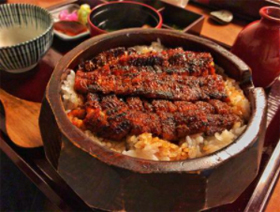 © photoAC 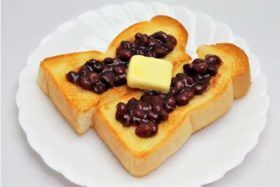 © photoAC 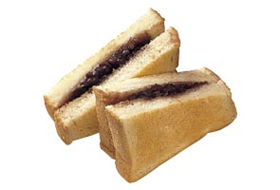 © Sugawara Chiyoshi and Kono Toshihiko 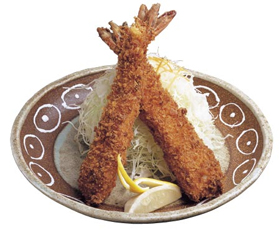 © Sugawara Chiyoshi and Kono Toshihiko |
Resources
|
Glenn, C. Miso, the Secret Weapon of the Samurai of Aichi. Retrieved 26 July 2021, from https://www.aichi-now.jp/en/columns/detail/46/ |
|
Japan Creative Centre 4 Nassim Road, Singapore 258372 +65 6737 0434 / jcc@sn.mofa.go.jp https://www.sg.emb-japan.go.jp/JCC/ Nearest parking at Orchard Hotel & Delphi Orchard |
 |